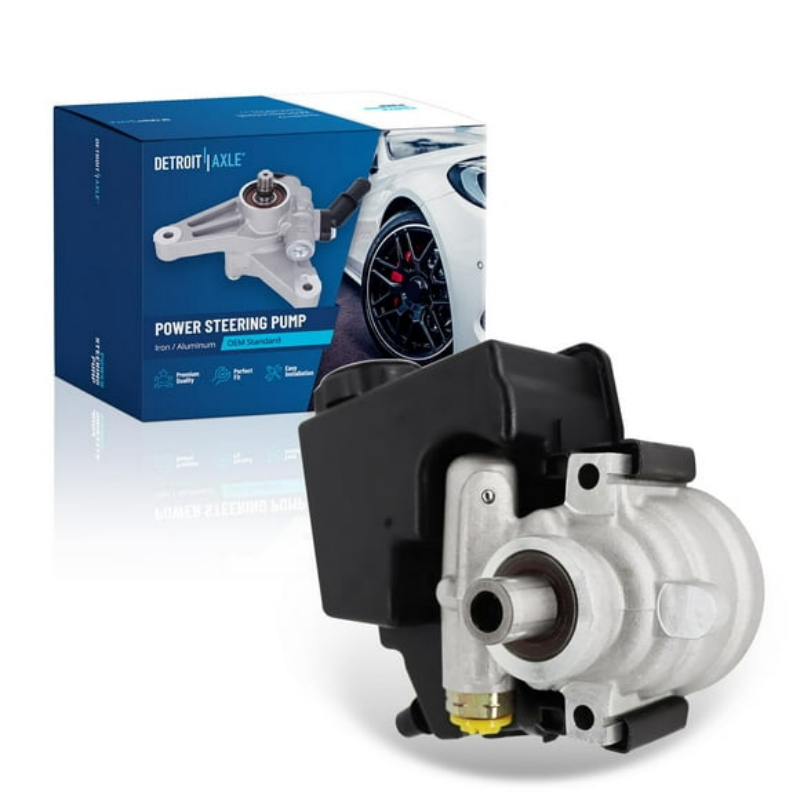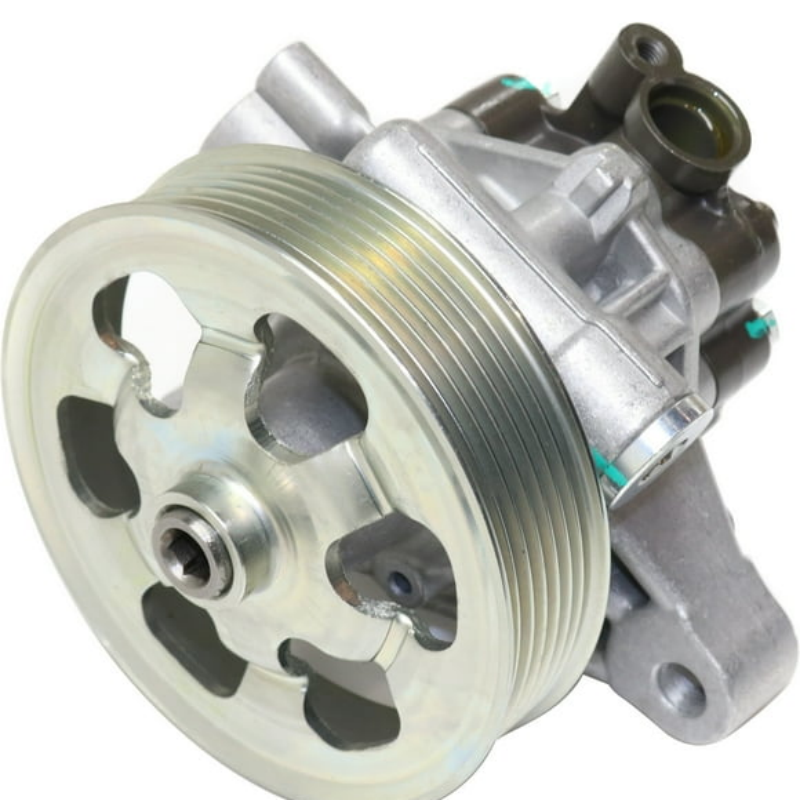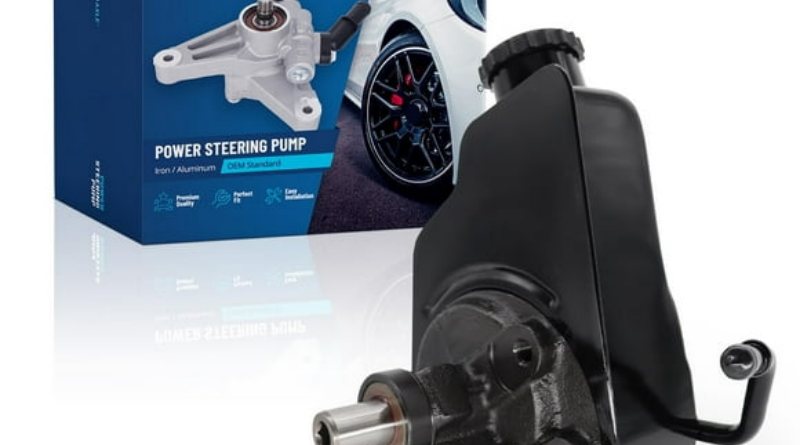Guide of Recognizing the Signs of A Bad Power Steering Pump
A properly functioning power steering system is crucial for the safe and manageable operation of any vehicle. The power steering pump plays a vital role in this system, providing the hydraulic pressure necessary for smooth steering. When the power steering pump begins to fail, it can lead to a host of issues that affect handling and overall vehicle performance. Recognizing the signs of a bad power steering pump early can save drivers both time and money, preventing further damage to the steering components and ensuring a safer driving experience.
Understanding the indicators that your power steering pump may be malfunctioning is essential knowledge for any car owner. These signs can vary from audible cues to a change in steering performance, and they often stem from underlying issues such as fluid leaks, wear and tear, or internal component failure. In this comprehensive guide, we will delve deep into the signs of a bad power steering pump, explore the reasons behind these issues, discuss how to address them, and provide tips for regular maintenance. By mastering these insights, you can take the necessary steps to prevent a simple problem from escalating into a more significant repair.

Understanding the Power Steering System
Before we delve into the signs of a bad power steering pump, it’s essential to understand how the power steering system operates. A power steering system helps drivers maneuver their vehicles more easily by augmenting the effort needed to turn the steering wheel. Here’s a breakdown of its components:
- Components of the Power Steering System: The system generally consists of a power steering pump, steering gear (rack and pinion or recirculating ball), power steering fluid, and hydraulic hoses. The pump generates hydraulic pressure, which assists in steering the vehicle.
- How It Works: When the driver turns the steering wheel, the power steering pump sends pressurized fluid to the steering gear, enabling smoother and less strenuous steering. This hydraulic assistance is particularly beneficial at low speeds or when parking.
- Types of Power Steering Systems: There are two types of power steering systems commonly found in vehicles: hydraulic and electric. Traditional hydraulic systems rely on a pump driven by the engine, while electric power steering systems utilize an electric motor to assist with steering.
Understanding the function of the power steering system helps you appreciate how critical the pump’s performance is to overall vehicle handling. When issues arise, recognizing the signs of a bad power steering pump becomes pivotal.
Common Signs of a Bad Power Steering Pump
When the power steering pump begins to fail, it can manifest in several ways. Observing these signs early can help mitigate potential risks and ensure safe driving.
- Whining or Moaning Noises: One of the most noticeable signs of a bad power steering pump is the sound it makes. Drivers may hear a whining or moaning noise when turning the steering wheel or during initial maneuvers. This noise often indicates low power steering fluid levels, a failing pump, or air trapped in the system.
- Stiff or Heavy Steering: If you notice that your steering wheel has become unusually stiff or requires more effort to turn, it is a significant indicator that the power steering pump may be failing. The hydraulic pressure generated by the pump is insufficient to assist with steering, leading to a lack of responsiveness.
- Leaking Power Steering Fluid: Checking for leaks is essential in diagnosing power steering pump issues. If you notice a reddish-brown fluid pooling beneath your vehicle, your power steering system may suffer from a leak. Leaking fluids indicate an issue with the pump or adjacent hoses.
- Squealing or Growling Sounds: Besides whining noises, you may also hear squealing or growling sounds during operation. These sounds can indicate that the pump’s internal components are worn, and they may eventually lead to total pump failure if left unaddressed.
Being aware of these common signs of a bad power steering pump can empower drivers to take corrective actions, ensuring the reliability and safety of their vehicles.
Diagnosing the Problem: Steps to Take
If you suspect that your power steering pump is failing, it’s important to undertake a systematic approach to diagnose the problem accurately. Here’s how to proceed:
- Initial Visual Inspection: Start by conducting a visual inspection of the power steering reservoir and surrounding components. Check for visible leaks, wear, or damage to hoses and connections.
- Check Power Steering Fluid Levels: Using the dipstick or inspection markings on the power steering reservoir, check the fluid levels. If the levels are low, it may indicate a leak or consumption issue.
- Listen for Noises while Steering: While parked, turn the steering wheel left and right to listen for any abnormal sounds. Whining, squealing, or grinding noises may suggest problems with the pump.
- Observe the Steering Feel: When driving, pay close attention to how the steering responds. If it feels stiff or less responsive, this may confirm a failing pump.
- Test Drive: Conduct a short test drive to see if the symptoms manifest under various conditions. Be attentive to changes based on speed or steering angle.
- Consult Professional Mechanic: If basic diagnostic measures indicate potential problems, it is wise to consult with a professional mechanic who can perform a more thorough examination using specialized tools and expertise.
Properly diagnosing the problem can help prevent further damage, making it crucial to maintain awareness of the signs of a bad power steering pump.

Common Causes of Power Steering Pump Failure
Understanding the causes of power steering pump failure can provide insight into how to avoid future issues. Here are some common causes:
- Low Power Steering Fluid: Low fluid levels can result from leaks, which can lead to inadequate hydraulic pressure. Running with low fluid levels can cause the pump to overheat and fail prematurely.
- Contaminated Fluid: Power steering fluid can become contaminated with dirt, debris, or moisture over time. Contaminated fluid can lead to increased wear on the internal components of the pump and may ultimately lead to failure.
- Worn Internal Components: Over time, the internal parts of the power steering pump can wear out. Worn bearings, gears, or valving can lead to a decrease in efficiency, producing noise and reduced performance.
- Excessive Heat: Operating the vehicle in extreme conditions, including heavy traffic or high temperatures, can lead to overheating of the power steering pump. Excessive heat can lead to fluid breakdown and premature wear.
- Incorrect Installation: If the pump or related components are improperly installed or maintained, it can lead to failure. Ensuring that all parts are correctly fitted and secured is crucial for functionality.
- Belt Issues: The power steering pump is driven by a belt connected to the engine. A worn or slipping belt can reduce the pump’s effectiveness and lead to signs of failure.
Being informed about the causes of power steering pump failure can aid in proactive measures for prevention and maintenance.
How to Address Power Steering Pump Problems
If you recognize signs of a failing power steering pump, taking swift action is vital. Below are steps to consider for addressing power steering pump issues effectively:
- Top Off Power Steering Fluid: If fluid levels are low, topping them off may temporarily restore function. Be sure to use the recommended fluid for your vehicle as specified in the owner’s manual.
- Inspect for Leaks: Conduct a thorough inspection of the hoses, reservoir, and connections for leaks. If you find any damaged hoses or fittings, replace them to prevent fluid loss.
- Replace Contaminated Fluid: If your power steering fluid appears dark or contaminated, it may be time for a full flush and replacement. This can be done at a service center to ensure that old fluid is completely removed and replaced with fresh fluid.
- Consult a Mechanic: If basic solutions do not resolve the issue, it is necessary to consult a qualified mechanic. They can assess whether the pump needs to be repaired or replaced based on thorough diagnostics.
- Monitor for Recurrence: After repairs or maintenance, monitor your power steering system over time. Pay attention to fluid levels, performance, and signs of returning noise or stiffness.
- Routine Maintenance: Ensure that you conduct routine maintenance checks that include fluid levels and belt conditions to preemptively catch issues before they escalate.
Properly addressing power steering pump problems ensures that you maintain a safe and reliable vehicle while extending the lifespan of the power steering system.
Preventative Measures for Power Steering System Longevity
Taking a proactive approach to the care and maintenance of your power steering system can significantly reduce the likelihood of encountering issues like steering pump failure. Here are some preventative measures best practices:
- Regularly Check Fluid Levels: Make it a habit to check the power steering fluid levels regularly. Topping off as necessary can prevent low fluid situations that lead to pump failure.
- Inspect the System: Periodically inspect the hoses and connections for signs of wear or damage. Replacing worn components early can help ensure the system’s integrity.
- Service Recommendations: Follow the manufacturer’s recommendations for servicing the power steering system. Adhering to scheduled maintenance can help catch issues before they lead to significant problems.
- Use the Right Fluid: Always use the type of power steering fluid specified for your vehicle. Using the wrong fluid can lead to system problems.
- Be Mindful of Driving Conditions: Avoid heavy loading and rough driving conditions whenever possible. Gentle driving can help extend the life of the power steering system.
- Check the Belt: Maintain the condition of the serpentine belt that drives the power steering pump. Replace it according to the manufacturer’s guidelines or whenever you notice signs of wear.
Embracing these preventative measures will enhance the longevity of your power steering system and mitigate the risk of suffering the signs of a bad power steering pump.

Conclusion
The signs of a bad power steering pump should never be ignored, as they can lead to safety hazards and more costly repairs if left unaddressed. By being proactive and vigilant about the symptoms and managing routine maintenance. Drivers can ensure their vehicles remain in optimal condition for a smooth and safe driving experience. Awareness of the steering system, understanding the potential causes of pump failure, and knowing how to react when faced with an issue empowers vehicle owners.
Ultimately, proper attention to your vehicle’s power steering pump fosters not only trust and safety while driving but also contributes to the overall health and longevity of the vehicle. Learning to recognize the signs of trouble will help you take timely corrective actions, ensuring that you remain in control on the road. Stay informed and engaged with your vehicle’s maintenance needs. And you will enjoy a reliable and responsive driving experience for years to come.
